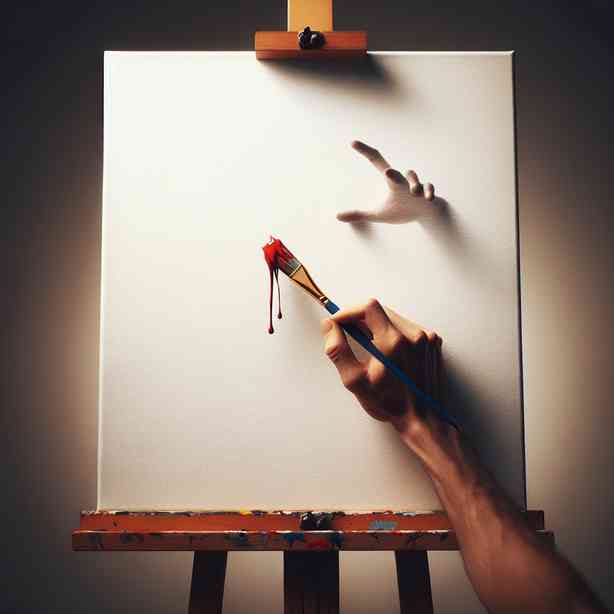
Fear is a universal experience that accompanies us in various forms throughout our lives. One of the distinctive situations where this fear becomes particularly pronounced is in the realm of creativity, especially when it comes to art. For many aspiring artists, the act of putting the first brushstroke on a blank canvas is fraught with anxiety and self-doubt. This fear can be debilitating, preventing individuals from expressing themselves and exploring their creative potential. Understanding the roots of this fear can help artists transcend it and embrace the artistic process with open arms.
The blank canvas represents a multitude of possibilities, yet it can also symbolize an overwhelming void. When faced with an emptiness that begs to be filled, artists often grapple with high expectations, both from themselves and from external sources. This pressure can lead to an acute fear of failure, as the first brushstroke carries with it the weight of judgment—both perceived and real. Artists may worry that their initial attempt will not reflect their abilities or intentions, causing them to hesitate and further intensify their anxiety.
Moreover, the fear of the first brushstroke is often rooted in deeper psychological aspects. Many individuals tie their self-worth to their creative output, resulting in an internal battle where they fear that failing to create something beautiful or meaningful equates to failing as a person. This mindset can lock artists in a cycle of procrastination, as the anxiety over beginning often feels more manageable than facing the possibility of disappointment.
To combat this fear, it’s essential to recognize that creativity is inherently a process of exploration and experimentation. Every artist has experienced moments of uncertainty, even those who are well-established in their fields. Embracing the notion that the first stroke doesn’t have to be perfect, or even good, can liberate artists from the constraining grip of unrealistic expectations. Instead of seeing the canvas as a final destination, artists can view it as a journey where mistakes and missteps play a crucial role in the development of their craft.
Creating a supportive environment can also significantly alleviate fear. Whether it’s through joining an artistic community or finding a mentor, connecting with others who share similar struggles can instill a sense of belonging and shared experience. In these spaces, artists can share their fears, seek advice, and celebrate their small victories, helping to diminish the feelings of isolation that often accompany creative endeavors.
Additionally, establishing a routine that emphasizes playfulness in the creative process can further reduce the anxiety surrounding that first brushstroke. By incorporating exercises that focus on spontaneity and exploration—such as doodling or experimenting with colors—artists can shift their mindset from one of fear to one of curiosity. This playful approach allows artists to reconnect with the joy of creating without the pressure to produce a finished product.
Mindfulness and self-compassion practices can also serve as powerful tools in overcoming the fear of initiation in art-making. By cultivating a present-moment awareness, artists can learn to observe their thoughts and feelings without judgment. This practice can help to demystify the fear, allowing for a more objective understanding of its origins. When artists interact with their inner critic, acknowledging its presence while not letting it dominate their creative decisions can be a game-changer.
Setting realistic goals can significantly ease the burden associated with the first brushstroke. Breaking down the artistic process into manageable steps can help artists focus on progress rather than perfection. For example, the goal could simply be to experiment with a specific color palette, rather than creating a masterpiece. Shifting the emphasis from outcome-oriented thinking to process-oriented thinking can lead to greater satisfaction and a reduced sense of fear.
Finally, it is crucial for artists to remind themselves that every masterpiece begins with that courageous first stroke. Each artist’s journey is unique, and what may seem like a perfect execution of an idea to one person can be viewed entirely differently by another. Art is not only a reflection of skill but also an expression of individuality, and each brushstroke is a step towards discovering and expressing one’s authentic self.
In conclusion, the fear of the first brushstroke is a common barrier that many aspiring artists face, but it does not have to define their creative journey. By understanding the psychological underpinnings of this fear, fostering a supportive community, embracing playful experimentation, practicing mindfulness, setting achievable goals, and recognizing the intrinsic value of the creative process, artists can overcome this initial hurdle. The journey of art is not about perfection; rather, it is about discovery, expression, and growth. So, the next time you find yourself staring at a blank canvas, remember: every great piece of art started with that first, brave brushstroke. Embrace the fear, and let your creativity flow!


